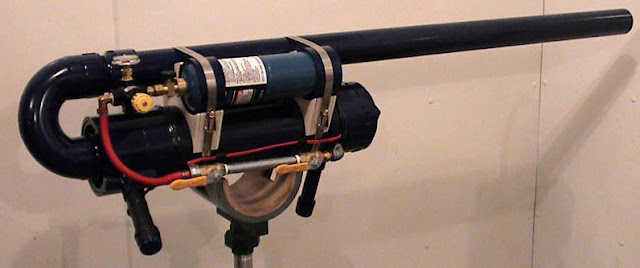The Gaza Strip is a small section of coastal land located in Southern Israel. It is controlled by Hamas, with its military wing, the al-Qassam brigades. The al-Qassam brigades number an estimated 25,000 fighters. Their primary weapon against Israel are unguided domestically made rockets. In 2014 Israel and Hamas went to war, the outcome of which was basically a stalemate. 2014 was the most recent confrontation that proved the IDF is tough to beat.
What would a Hamas victory look like? Hamas and the al-Qassam brigades could certainly not defeat Israel in a conventional sense of conquering territory. A victory for the Gaza strip would look more like destroyed IDF vehicles and key targets being hit by unguided rockets. Both of these factors are difficult as the IDF protects its tanks and armored vehicles with the Trophy active protection system. Israel also defends its territory against rockets with the Iron Dome system that shoots down incoming rockets. The Iron Dome is not perfect, and many rockets still can get through at present.
The Trophy APS on a Merkava tank.
The Iron Dome system.
The al-Qassam brigades would have to find ways to get around these systems as well as avoid the powerful Israeli Air Force. There are several ways to get around Trophy, but not as many ways around the Iron Dome.
The IDF has hundreds of warplanes, including the F-15, pictured below.
There are several ways around the Trophy APS. These include firing multiple RPGs at the target at once, putting a ballistic shield on the RPG and coating the RPG in radar absorbing paint. The IDF has placed the Trophy APS on all of its major armored vehicles. Its effectiveness was demonstrated in 2014, when no tank was destroyed by an RPG or ATGM fired by the Qassam brigades.
A Namer APC with the Trophy APS.
First, multiple RPGs could be fired at the same tank or APC. This would saturate the APS and only one RPG would be hit with the APS projectiles. Israel has begun to address this possibility with the "trench coat" upgrade, however.
Multiple RPG-29s could be fired on one target.
Another option is to coat RPGs in radar absorbing material. Paint containing ceramic microspheres and Ferrite are known to absorb radar waves, making the projectile invisible to the APS radar. It is unclear if Gaza would be able to produce such a paint. Another option is foam coated in Ferrite or Graphene and wrapped around RPGs. There are even commercially available radar absorbing foams.
The domestically made Yasin RPG or RPG-7 rockets could be coated with Radar absorbing paint or foam.
CFOAM is a commercially available radar absorbing material. How Gaza could obtain it is unknown and not likely. It may be able to produce its own version, however.
The third option is to attach a ballistic shield to RPG rounds. These shields would deflect APS projectiles and allow the rocket to hit the target. This would make them less accurate, but it would give them a chance.
RPGs could be covered with a ballistic shield.
What the outcome of these methods could look like. Photo from the 2006 Lebanon war, before the Trophy APS entered service.
Rockets are the Qassam brigade's most iconic weapon. The Iron Dome system now shoots down a large percentage of them. There are a few ways around this. Many rockets could be fired at the same location, rockets could be coated with radar absorbing material, or rockets could be filled with no explosives and act as kinetic impactors and be unstoppable.
Qassam rockets.
The first option is to target specific areas with many rockets. This is difficult, as Gaza's rockets are unguided and inaccurate. Rockets could be built with specific ranges for preset targets like airbases and the Dimona nuclear reactor. If dozens or even hundreds of rockets were launched at once it would be difficult for Iron Dome to hit the majority of them.
Rockets being fired from the Gaza Strip.
The Iron Dome firing an interceptor rocket.
The second option is to make "kinetic impactor" rockets with no explosives in them. The Iron Dome works by detonating the rocket in the air, if there's no explosive in the rocket, there is nothing to detonate. The rocket would then crash down on its target. This would have a major psychological impact, as rockets could no longer be stopped.
If rockets were able to hit airbases and the Dimona nuclear reactor, Israel would be in a bad position. The Dimona reactor itself is heavily armored, but surrounding structures and water cooling pipes could be destroyed by a rocket barrage, possibly causing a nuclear meltdown if rockets were to hit in just the right places.
The Dimona reactor itself is heavily armored, but surrounding structures like the cooling tower seen here are not.
Large rockets could have no explosives and serve as kinetic impactors.
To combat the Israeli Air Force, unguided rockets could be made to explode at certain altitudes in the air over the Gaza Strip during a war. In large numbers, these small "flak rockets" could down IDF aircraft.
Flak exploding around a US Air Force B-17 bomber during WWII.
A B-17 destroyed by flak.




































what is trench coat?
ReplyDelete